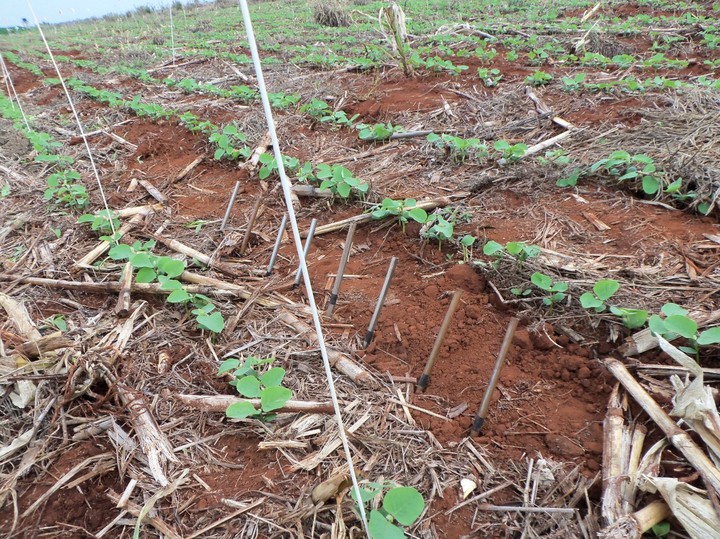Vertical stratification of K uptake for soybean-based crop rotation
 Image credit:(Danyllo Dias)
Image credit:(Danyllo Dias)
Abstract
Soybean [Glycine max (L.) Merrill] is a major grain-legume used in rotation with cereal crops throughout the world. However, little is known about the soybean-based crop rotations effects on potassium (K) efficiency and its cycling capacity in soil. Therefore, a field study was carried out over 2 years to assess K cycling and which soil depth contributes to K uptake in first soybean crop as well as in the following crop rotation within the same rainfed growing season. Four rotations were evaluated, including (1) soybean-fallow, (2) soybean-ruzigrass (Brachiaria ruziziensis), (3) soybean-corn (Zea mays L.), and (iv) soybean-intercrop (corn and ruzigrass). Rubidium (Rb) was used as a K tracer and applied at the depths of 0, 0.3, and 0.6 m. For soybean, 60% of the K was taken up from the shallow soil layer, whereas the depths of 0.3 and 0.6 m accounted for 25 and 15%, respectively. In the second crop, ruzigrass monoculture and intercrop enhanced K uptake (41–302 kg ha−1) relative to the corn monoculture, and most of the K originated from a soil depth of 0.3–0.6 m, with average values of 40 and 34%, respectively. The K cycled from soybean residue contributed between 1 and 13% of the total nutrient cycling. In the soybean crop, most of the K was taken up from the upper soil layer. The soybean-intercrop rotation was the best pathway for allying the benefits of high K-cycling grass with the production of a cash crop.